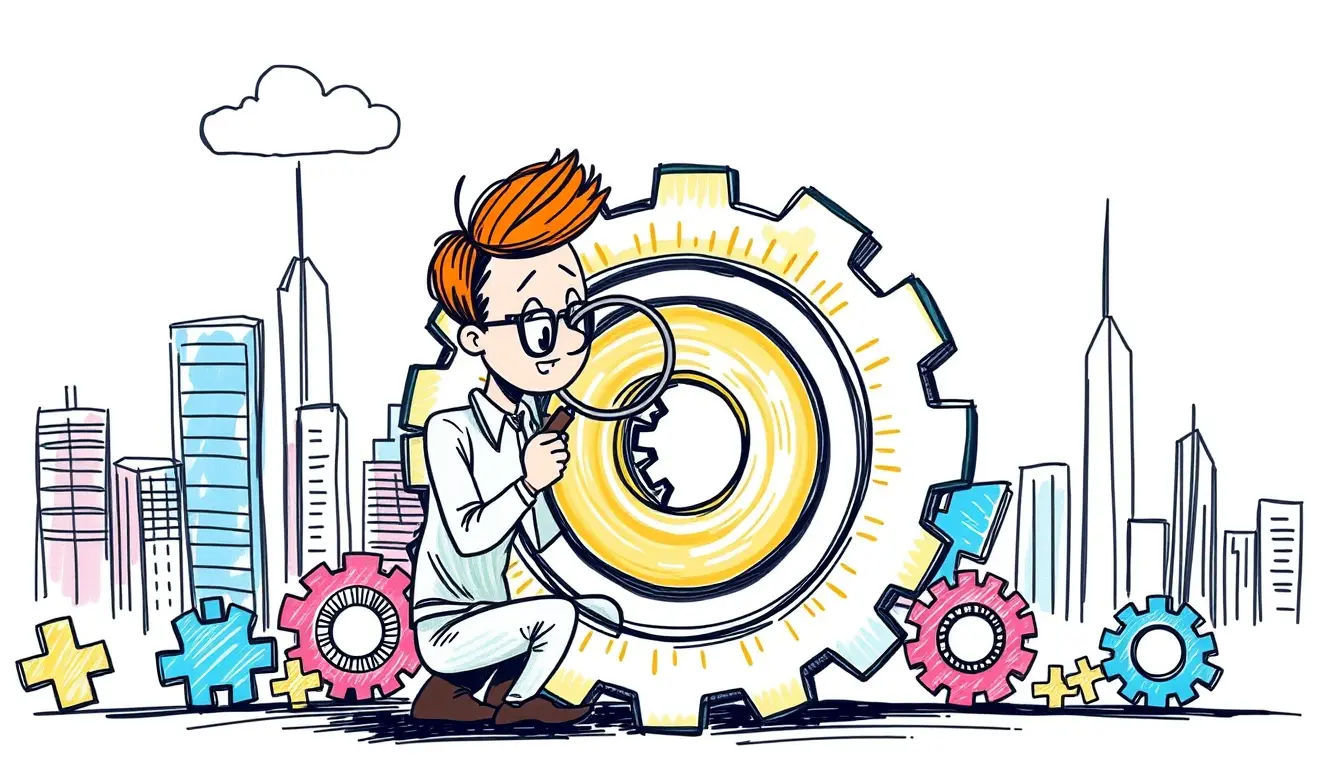Defining Lean Concepts
Lean concepts refer to a series of principles and practices aimed at streamlining operations and optimizing efficiency in various industries. At its core, lean methodology focuses on identifying and eliminating waste in all forms, including unnecessary activities, defects, overproduction, excess inventory, and waiting time. By applying lean concepts, organizations strive to achieve a lean and efficient production process that maximizes value for both customers and stakeholders.
One of the key principles of lean methodology is continuous improvement, known as Kaizen. This concept encourages organizations to continuously evaluate and enhance their processes, products, and services to drive efficiency and deliver superior value. In addition, lean concepts stress the importance of standardized processes that minimize variations and ensure consistent quality. By implementing lean principles, organizations can achieve operational excellence, reduce costs, increase customer satisfaction, and gain a competitive edge in today’s dynamic business environment.
• Lean methodology focuses on identifying and eliminating waste in all forms
• Waste includes unnecessary activities, defects, overproduction, excess inventory, and waiting time
• Lean concepts aim to achieve a lean and efficient production process
• The goal is to maximize value for customers and stakeholders
• Continuous improvement is a key principle of lean methodology (Kaizen)
• Organizations are encouraged to continuously evaluate and enhance their processes, products, and services
• Standardized processes minimize variations and ensure consistent quality
• Implementing lean principles can lead to operational excellence
• It helps reduce costs and increase customer satisfaction
• Gain a competitive edge in today’s dynamic business environment
Understanding Waste in Operations
Understanding Waste in Operations is crucial for organizations looking to improve their efficiency and productivity. Waste, known as “Muda” in Lean methodology, refers to any activity or process that does not add value to the final product or service. These non-value-added activities can have a significant impact on an organization’s bottom line, as they consume resources without providing any benefit to the customer.
There are eight common types of waste identified in Lean methodology: overproduction, waiting, transportation, over-processing, excess inventory, motion, defects, and underutilized skills. By identifying and eliminating these types of waste, organizations can streamline their operations and optimize their resources. Understanding where waste occurs within a process is the first step towards reducing it and increasing efficiency.
Identifying Value-Added Activities
To effectively streamline operations and optimize productivity, it is crucial to identify and focus on value-added activities within a process. Value-added activities are those that directly contribute to meeting customer requirements and add value to the final product or service. These activities include design, manufacturing, assembly, packaging, and other processes that transform raw materials or inputs into finished goods.
Differentiating value-added activities from non-value-added ones is key to eliminating waste and improving efficiency. Non-value-added activities are those that do not contribute to the end product or service but are necessary due to inefficiencies or constraints within the process. Examples of non-value-added activities include excessive waiting times, unnecessary transportation, overprocessing, and defects that require rework or correction. By identifying these non-value-added activities, organizations can focus on eliminating or minimizing them, thereby reducing costs, lead times, and process complexity.
Eliminating Non-Value-Added Activities
In order to enhance productivity and efficiency, organizations must strive to eliminate non-value-added activities from their operations. These activities refer to tasks or processes that do not directly contribute to the creation of value for the customer. By scrutinizing the entire value stream, businesses can identify and subsequently eliminate these wasteful activities.
One effective approach to eliminating non-value-added activities is through the application of lean principles. Lean thinking encourages organizations to question every task and process to determine its value and necessity. This critical evaluation allows businesses to identify activities that do not enhance the product or service in the eyes of the customer. Once these non-value-added activities are identified, organizations can then take steps to either streamline, automate, or eliminate them altogether, thereby increasing efficiency and reducing waste.
Implementing 5S Methodology
Creating a clean and organized work environment is essential for improving efficiency and productivity. One effective methodology for achieving this is the 5S methodology. The 5S methodology consists of five steps: sort, set in order, shine, standardize, and sustain.
The first step of the 5S methodology is to sort. During this step, the workspace is assessed to identify and eliminate unnecessary items. This helps reduce clutter and makes it easier to find and access necessary tools and materials. Once the unnecessary items are removed, the next step is to set in order. This involves assigning specific locations for tools, equipment, and materials, ensuring they are easily accessible and properly labeled. By implementing the 5S methodology, organizations can create a more efficient and organized work environment, leading to improved employee morale and productivity.
Standardizing Processes
– Standardizing processes is a critical step in achieving operational excellence. When processes are not standardized, it can lead to inconsistencies, errors, and inefficiencies. By establishing standard procedures and work instructions, organizations can ensure that tasks are performed consistently and that everyone understands the expected outcomes. Standardization also helps in identifying areas for improvement and creating a baseline for measuring performance.
– Standardizing processes involves creating detailed documentation that outlines the steps, resources, and sequence of activities required to complete a task. This documentation serves as a reference guide for employees, enabling them to perform their duties accurately and efficiently. By following standardized processes, organizations can reduce variability in performance, minimize errors, and enhance overall productivity. Additionally, standardization enables organizations to scale their operations, as it provides a foundation for training new employees and maintaining consistency across multiple locations or departments.
Using Visual Management Systems
Visual management systems are an integral part of lean operations. These systems use visual cues and displays to provide information and foster communication in the workplace. By using visual management, organizations can improve efficiency, productivity, and overall performance.
One common aspect of visual management systems is the use of visual controls, such as color-coding, labels, and signs. These visual cues help employees quickly and easily identify the status of equipment, inventory, and processes. For example, color-coded labels can indicate whether a piece of equipment is functioning properly or in need of maintenance. Likewise, signs can indicate the location of specific tools or the procedures to follow for a particular task. By making information readily available and easily understandable, visual management systems help to streamline operations and reduce errors.
Applying Just-in-Time Principles
Just-in-Time (JIT) principles are a cornerstone of lean manufacturing and operations management. The aim of JIT is to reduce waste, improve efficiency, and maximize customer value. By implementing JIT, organizations strive to eliminate any activities or processes that do not directly contribute to value creation. This approach promotes a pull-based system, where items are produced and delivered just in time to meet customer demand, minimizing the need for excessive inventory and reducing costs. JIT principles also emphasize the importance of continuous improvement, fostering a culture of collaboration and efficiency throughout the organization.
One key aspect of applying JIT principles is the concept of kanban, which is a visual signaling system that controls the flow of production. It allows for better coordination between different departments and suppliers, ensuring that materials and components are available when needed. By closely monitoring inventory levels and reacting to demand fluctuations, organizations can optimize their production schedules and avoid overproduction or shortages. Moreover, JIT encourages cross-training and flexibility among employees, as it requires a workforce that is adaptable and capable of performing multiple tasks. In this way, JIT principles not only streamline operations but also empower and engage employees, leading to greater efficiency and a higher quality output.
Utilizing Kaizen Events for Continuous Improvement
Kaizen events, also known as rapid improvement workshops, are powerful tools for driving continuous improvement within an organization. These events are typically short-term, focused efforts that bring together cross-functional teams to identify and address specific issues or opportunities. By utilizing kaizen events, companies can achieve meaningful and sustainable improvements in quality, efficiency, and productivity.
During a kaizen event, team members analyze the current state of a process or system, identify areas for improvement, and develop action plans to achieve desired outcomes. The key principle behind kaizen events is the philosophy of continuous improvement, where small, incremental changes lead to significant long-term results. By involving employees from different departments and levels of the organization, kaizen events promote collaboration, engagement, and ownership of the improvement process. Through the effective utilization of kaizen events, organizations can enhance their overall performance and adapt to the ever-changing business environment.
Measuring and Analyzing Key Performance Indicators
Key performance indicators (KPIs) are essential tools for measuring and analyzing the performance of an organization or a specific process. These indicators act as quantifiable measurements that reflect the achievement of goals and objectives. By monitoring KPIs, organizations can gain valuable insights into their overall effectiveness and efficiency.
To effectively measure and analyze KPIs, organizations need to establish clear and specific metrics that align with their strategic objectives. These metrics should be meaningful, measurable, and tied to specific targets. By selecting the right KPIs, organizations can focus their efforts on areas that require improvement and identify any deviations from desired performance levels. Furthermore, analyzing KPIs on a regular basis allows organizations to identify trends, patterns, and potential areas of concern, enabling them to make informed decisions and take appropriate actions to drive continuous improvement.
What are Key Performance Indicators (KPIs)?
Key Performance Indicators, or KPIs, are measurable values that indicate the success or effectiveness of a business or individual in achieving specific goals or objectives.
Why are KPIs important in business?
KPIs provide a way to measure performance and progress towards goals, allowing businesses to identify areas for improvement, track performance over time, and make data-driven decisions.
What are some common KPIs used in business?
Common KPIs include financial metrics such as revenue, profit margin, and return on investment, as well as operational metrics like customer satisfaction, employee productivity, and inventory turnover.
How do you measure KPIs?
KPIs can be measured using various methods, including collecting and analyzing data, conducting surveys or audits, using tracking software, or utilizing performance management tools.
What is the purpose of measuring and analyzing KPIs?
Measuring and analyzing KPIs allows businesses to gain insights into their performance, identify areas of improvement, set realistic goals, evaluate the effectiveness of strategies and initiatives, and make informed decisions to drive growth and success.
How often should KPIs be measured and analyzed?
The frequency of measuring and analyzing KPIs can vary depending on the specific goals and objectives of the business. Some KPIs may be monitored daily or weekly, while others may be assessed monthly, quarterly, or annually.
What should businesses do with the insights gained from analyzing KPIs?
Businesses should use the insights gained from analyzing KPIs to identify trends, patterns, and areas of improvement. This information can then be used to develop strategies, make adjustments to processes, allocate resources effectively, and drive continuous improvement.
Can KPIs be different for each industry or business?
Yes, KPIs can vary depending on the industry, business model, and specific goals of an organization. Each business should identify and measure KPIs that are most relevant to their industry, objectives, and desired outcomes.
Are there any best practices for measuring and analyzing KPIs?
Yes, some best practices for measuring and analyzing KPIs include aligning KPIs with business goals, using accurate and reliable data sources, setting realistic targets, establishing benchmarks for comparison, and regularly reviewing and updating KPIs as needed.
How can businesses ensure the accuracy and validity of their KPI measurements?
To ensure accuracy and validity, businesses should establish clear and consistent measurement methodologies, ensure data quality and integrity, validate and verify data sources, and regularly evaluate and refine measurement processes.














Leave a Reply